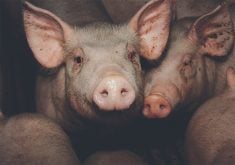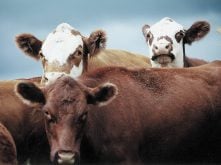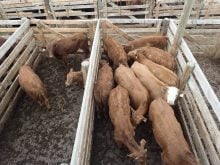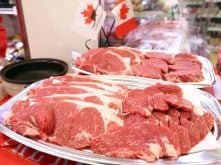CALGARY – It’s tough making a living on cattle this year and without some sharp figuring, profit margins will continue tight.
As the cattle cycle bottoms out with lower prices, increased beef supply and full scale liquidation of breeding stock, each producer has to plan a strategy.
Controlling feed costs will be a critical point.
Errol Anderson of Palliser Commodities in Calgary said there is about a 14 month supply of feed barley and wheat. That has caused futures on feed wheat to drop from $228 to $170 per tonne. Bids should settle about $10 lower, he said.
Read Also
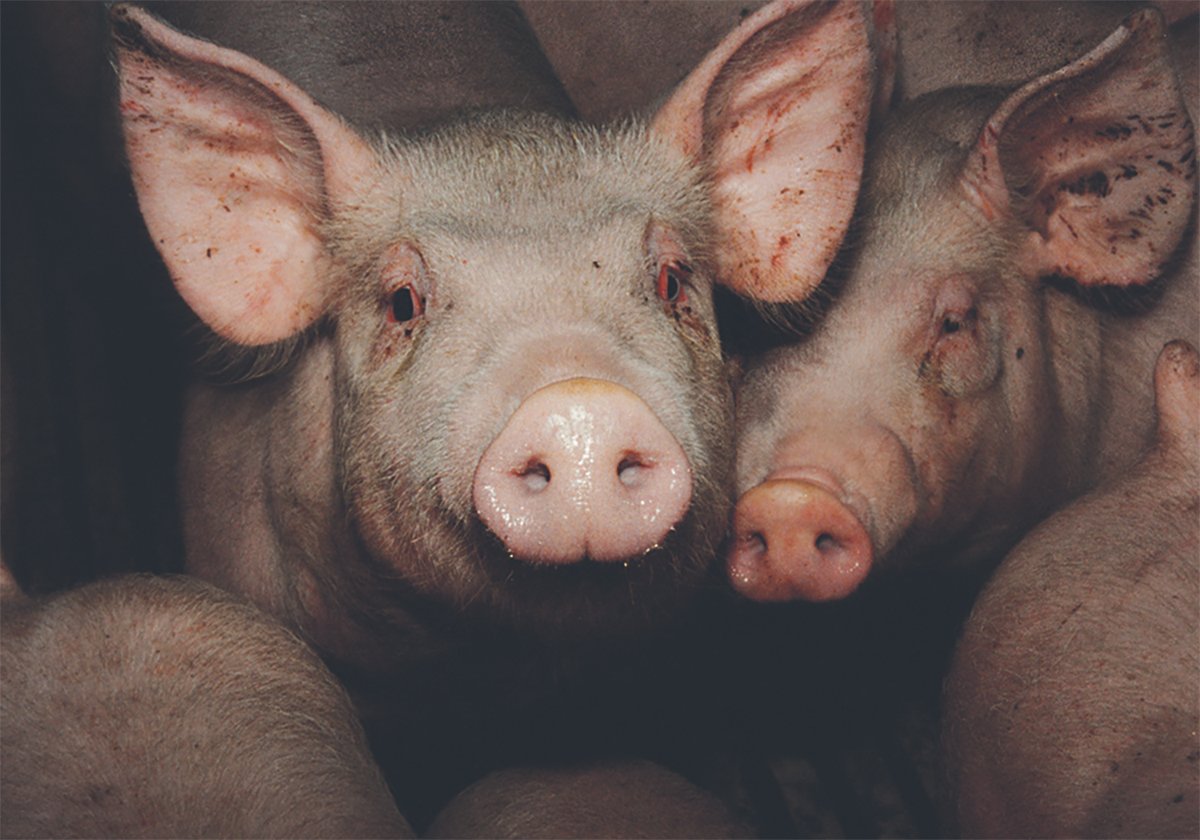
The Western Producer Livestock Report – October 30, 2025
Western Producer Livestock Report for October 30, 2025. See U.S. & Canadian hog prices, Canadian bison & lamb market data and sales insights.
Feed barley quality is variable, ranging from 42 to 52 pounds per bushel, according to reports. Feeders are still demanding 48 lb. barley and after using feed wheat several years ago some prefer it in cattle rations, said Anderson.
Anne Dunford, senior analyst with Canfax, said harvest could be a force in how the cattle markets swing. Lower production costs are possible this season because more feed wheat and barley is available.
Feed costs influence planning decisions to buy and sell and after last year’s losses people are cautious.
“The feeders that fed calves last year are still vividly remembering the $200 a head loss this spring,” Dunford said.
Last fall some producers held back calves, anticipating a market rally. It didn’t happen and final prices were even lower than sellers were willing to accept on earlier bids.
This fall a different attitude has been detected as producers seek ways to save money, said order buyer Tony Saretsky, owner of Cantriex Livestock International Inc. at Ponoka, Alta.
The yearling run started earlier than expected with prices in the high 80s to low 90s. But there were obvious problems stemming from last year’s high production costs, he said.
Producers who skimped on feed may already have done irreparable damage. Reduced feed produced more lean, lower quality cattle on the market.
Hot weather in August produced less grass, and some producers who overwintered calves didn’t get enough rate of gain due to low- maintenance, low-cost rations.
“There’s a lot of lighter grass-fed cattle than we’ve seen in recent history,” said Saretsky.
To put some flesh on calves before they hit market, producers might be forced to pull them off grass and feed grain for a few weeks, making animals more attractive to buyers who don’t want overly lean cattle.
Top quality, cheaper
More British influenced cattle coming through the yard is a welcome trend for Saretsky. He said they are cheaper to finish to slaughter weight than large, rangey cattle, and produce better quality beef.
“We’re seeing more British in the mix. We’re begging the market to get away from the extreme and go for more middle of the road,” he said.
Consignment to satellite sales is also increasing. Using the traditional auction market costs a commission, and more people are joining satellite auctions to save money.
A few weeks ago as many as 14,000 head were sold in two and half hours at Vold, Jones and Vold of Ponoka through a link with the Canadian Satellite Auction.
“Satellite sales have been enormous. You’re seeing more of the yearling trade that didn’t come through the market system,” said Saretsky.
For a satellite sale, cattle are videotaped at home and offered for bid every two weeks for nationwide television coverage. The animals don’t leave the pasture until it’s time to go to their new home or to slaughter. This saves shrink on the cattle, plus transportation costs.
“When your calves are only bringing $300, how can you afford to give an auction market $15 each to sell your cattle?” asked Saretsky, noting producers can spend up to five percent of the final price in commissions on large lots of cattle.



